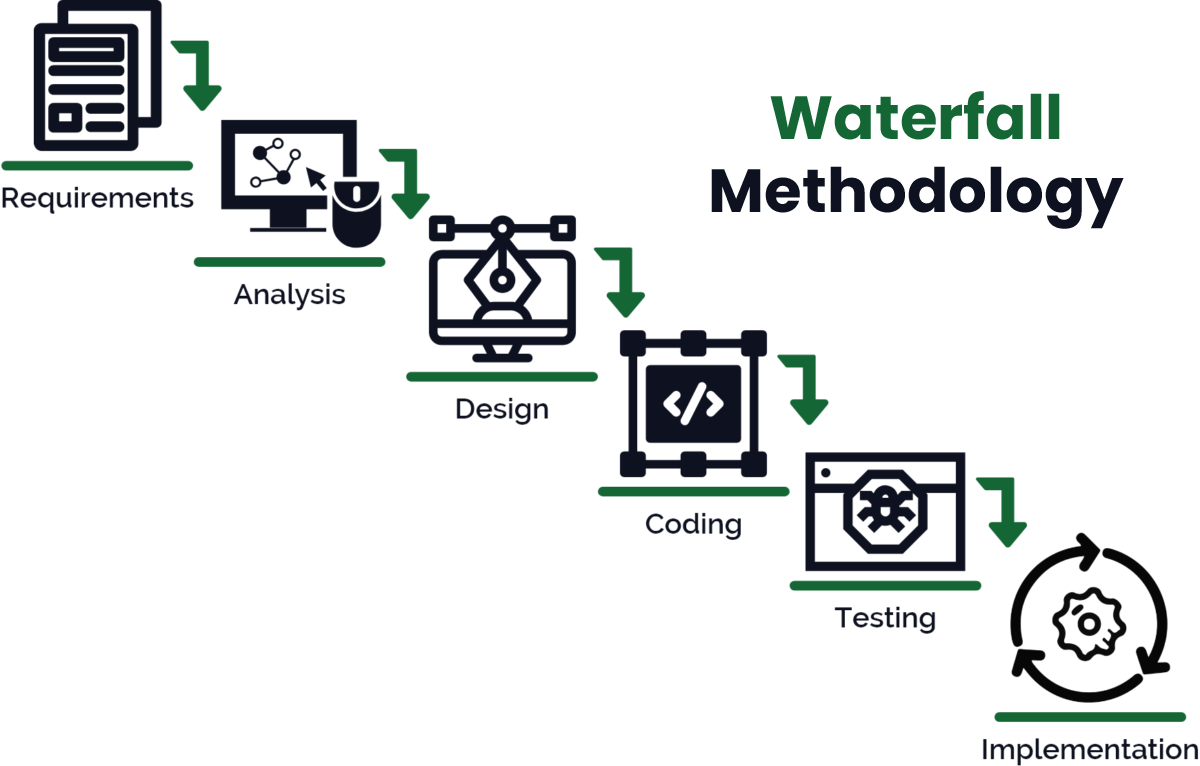Software Development Life Cycle (SDLC):
Waterfall vs Agile Model
Waterfall Methodology
Overview
The Waterfall Model is a sequential software development methodology where progress flows in one direction—like a waterfall—through defined phases. Each phase must be completed before moving to the next, ensuring a structured approach to software development.

Phases of the Waterfall Model
1️⃣ Requirements Gathering & Analysis
- Understand and document user requirements.
- Outputs: Software Requirement Specification (SRS) document.
2️⃣ System Design
- Define the overall system architecture.
- Outputs: High-Level Design (HLD), Low-Level Design (LLD).
3️⃣ Implementation (Coding)
- Convert design documents into actual code.
- Outputs: Developed software modules.
4️⃣ Testing
- Identify and fix bugs.
- Outputs: Test Cases, Test Reports.
5️⃣ Deployment
- Deploy the software in the live environment.
- Outputs: Release notes, Deployment reports.
6️⃣ Maintenance
- Fix issues and provide updates.
- Outputs: Bug fixes, Feature updates.
Waterfall Model Diagram
Waterfall Methodology
[Requirement]
|
[Design]
|
[Implementation]
|
[Testing]
|
[Deployment]
|
[Maintainance]
Advantages ✅
- Simple and easy to understand.
- Clear documentation and well-defined phases.
- Best for projects with clear, stable requirements.
Disadvantages ❌
- Rigid, does not accommodate changes easily.
- Late testing phase may lead to expensive bug fixes.
- Not suitable for complex, evolving projects.
When to Use Waterfall Model?
- When project requirements are well-defined.
- When changes are unlikely during development.
- For small to medium-sized projects.
Comparison with Agile 📊
| Feature | Waterfall Model | Agile Model |
|---|---|---|
| Flexibility | Rigid | Highly flexible |
| Feedback | Late-stage | Continuous |
| Testing | After development | Throughout |
| Project Size | Small/Medium | Any size |
| Cost of Change | High | Low |
Conclusion 🎯
The Waterfall Model is a structured, phase-driven methodology best suited for projects with fixed requirements and predictable outcomes. However, for projects requiring flexibility and iterative feedback, Agile or hybrid models may be more effective.